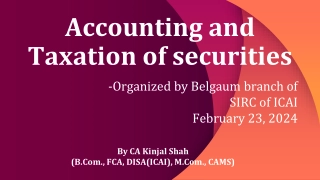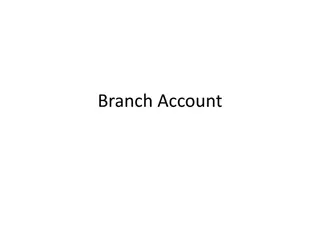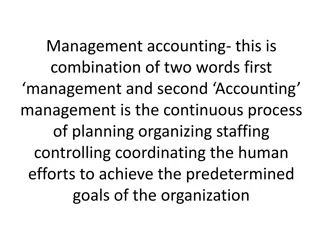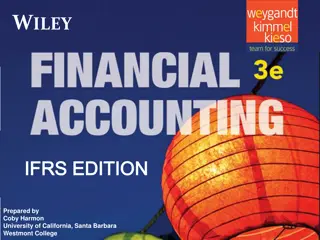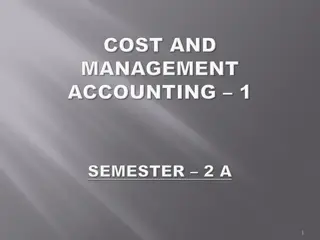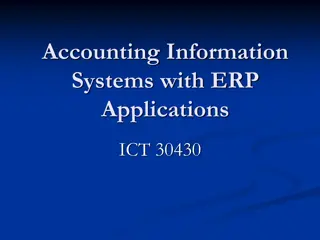Understanding Branch Accounting in Financial Management
Branch accounting is a crucial system where separate accounts are maintained for each branch or operating location of an organization. Its objectives include ascertaining branch-wise profits or losses, exercising control, maintaining proper records, and coordinating operations. Explore types of branches and methods of recording in this detailed study.
Download Presentation

Please find below an Image/Link to download the presentation.
The content on the website is provided AS IS for your information and personal use only. It may not be sold, licensed, or shared on other websites without obtaining consent from the author. Download presentation by click this link. If you encounter any issues during the download, it is possible that the publisher has removed the file from their server.
E N D
Presentation Transcript
BRANCH ACCOUNTS Subject:- Financial accounting Class:-B.com 1st(sem 2) College:-IB(PG)College,Panipat (Affiliated to kurukshetra university) Submitted by:- Reeta ( Dept. of commerce)
MEANING OF BRANCH The aim of every business is to grow and increase its sales so as to earn more and more profits.To achieve objective the strategy is to make market its products over a large territory,which is only possible only if the bussiness decide to split its business into certain divisions.These are called Branches .
MEANING OF BRANCH ACCOUNTING Branch accounting is a system of book- keeping in which separate accounts are maintained for each branch or operating location of an organization.
OBJECTIVES OF BRANCH ACCOUNTING To ascertain the profit or loss of each branch . To exercise a proper degree of control on the operations. To keep a proper record of goods supplied. To coordinate the operations of various branches.
DEPENDENT BRANCHES These branches sell only those goods which are supplied by the Head office . All expenses of regular nature are paid directly by the head office. Such branches are instructed to deposit the amount of cash sales and collection from debtors to the credit of head office.
METHODS OF RECORDING 1.Debtors or direct method 2.Final Accounts method 3. Stock and debtors method 4.Wholesale branch method
STOCK AND DEBTORS METHOD Under this method following accounts will be opened:- 1.Branch stock Account 2.Branch Debtors Account 3.Branch Adjustment Account 4.Branch Expenses Account 5.Branch Profit & Loss Account
WHOLESALE BRANCH METHOD In order to ascertain the true profit at retail branches ,the head office charges the branches with wholesale price. In head office trading account ,goods sent to branches are recorded at wholesale price . Wholesale price is treated as cost price by the branch.
INDEPENDENT BRANCHES They are allowed to have their own purchases,sales and other transactions. It keeps a complete set of double entry books. These types of branches do not required to remit all daily cash to Head office. These branches doesn t limited to goods supplied by head office only,these trade in other goods also.
GOODS IN TRANSIT When head office sends goods to branch and such goods are not received by the branch till the end of the period ,the goods are known as goods in transit . Entry:- Goods in transit Dr To Branch
CASH IN TRANSIT Sometimes cash is remitted by the branch ,but not yet received by the head office.Hence,The branch account and head office show different balances. ENTRY:- Cash in Transit Dr To Head office



